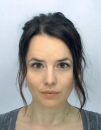Modern Physics Methods in Electrical Engineering and Computing
Data is displayed for academic year: 2023./2024.
Course Description
Conceptual bridges from classical physics to quantum physics, particle-wave dualism, basic notions. Derive of 1D Schrödinger equation. Tunnel effect, electron in a potential well, WBK method. Methods of analysis of materials based on the characteristic X-rays and gamma-photons. Detectors of radiation, applications and resolutions. Computed tomography and PET technique. Basic quantum-mechanical description of the properties of conductors and semiconductors. Effective mass of electron and holes. Hall effect and quantum Hall effect. Low temperature superconductivity, basic pictures of the BCS theory, quantization of magnetic flux, Josephson junction and magnetometer. Methods of synchrotron light beams and nanotechnologies.
Study Programmes
University undergraduate
[FER3-EN] Computing - study
Elective Courses
(5. semester)
[FER3-EN] Electrical Engineering and Information Technology - study
Elective Courses
(5. semester)
Learning Outcomes
- Explain events and concepts of quantum systems
- Identify quantum mechanics to elementary processes and radiation detectors
- Distinguish quantum conductivity of metals, semiconductors, and apparatus.
- Explain Hall efect
- Describe superconductivity of the BCS theory versus High temperature superconductivity materials
- Explain magnetism in quantum theory
- Explain synchrotron light in nanophysics
Forms of Teaching
Lectures
The examples are solved during the lectures.
Seminars and workshopsSeminar is mandatory.
Grading Method
| Continuous Assessment | Exam | |||||
|---|---|---|---|---|---|---|
| Type | Threshold | Percent of Grade | Threshold | Percent of Grade | ||
| Seminar/Project | 0 % | 20 % | 0 % | 20 % | ||
| Mid Term Exam: Written | 0 % | 40 % | 0 % | |||
| Final Exam: Written | 0 % | 40 % | ||||
| Exam: Written | 0 % | 80 % | ||||
Week by Week Schedule
- Transition from classical to quantum physics. Uncertainty relations in quantum physics.
- Experimental basis of quantum physics. Solving simple quantum mechanics systems.
- Wave function. One-dimensional Schrödinger equation.
- Particle in a potential well. Tunnel effect (thick and thin barrier).
- Material analysis using characteristic X-rays and gamma-photons. Radiation detectors and spectra.
- Detector resolution. Computing tomography (CT) and positron emission tomography (PET).
- Magnetic resonance imaging (MRI).
- Midterm exam
- Classical Hall effect and related quantum phenomenology
- Microscopic theory of superconductivity
- Technologies of superconducting materials
- Accelerators and synchrotron radiation.
- Fundamentals of nanotechnology.
- Methods of modern particle physics and new technologies
- Final exam
Literature
Dubravko Horvat (2011.), Fizika II, Neodidacta, Zagreb
Vladimir Knapp, Petar Colić (1990.), Uvod u električna i magnetska svojstva materijala, Školska knjiga, Zagreb
For students
General
ID 223359
Winter semester
5 ECTS
L1 English Level
L1 e-Learning
30 Lectures
5 Seminar
0 Exercises
0 Laboratory exercises
0 Project laboratory
0 Physical education excercises
Grading System
85 Excellent
70 Very Good
60 Good
50 Sufficient


 Pristupačnost
Pristupačnost
